预约演示
更新于:2025-11-09

University of Minho
更新于:2025-11-09
概览
标签
肿瘤
皮肤和肌肉骨骼疾病
小分子化药
关联
1
项与 University of Minho 相关的药物靶点- |
作用机制- |
在研适应症 |
非在研适应症- |
最高研发阶段临床前 |
首次获批国家/地区- |
首次获批日期- |
46
项与 University of Minho 相关的临床试验NCT06317753
Can Exercise Rewire the Brain Addiction Circuitry? A Randomized Trial of Exercise and Binge Drinking
The aim of the present study is to apply neuroimaging techniques to investigate how physical exercise may influence the addiction circuitry, ultimately reducing alcohol consumption and craving in youth binge drinkers. This proposal will advance knowledge on how exercise may modulate the neurocircuitry of addiction. Uncovering the neurobiological mechanisms underlying the interactive neural effects of exercise and alcohol intake may provide additional scientific insights for the development of preventive and intervention programs for youth BD and AUD.
开始日期2026-01-01 |
申办/合作机构 |
NCT05472194
Promoting Inclusive Education Through Executive Functions - Study Protocol of a Randomized Control Trial
Background: Recently governments worldwide have been doing enormous efforts to ensuring egalitarian educational opportunities for all children. However, the number of children that remain out of the school or lack proficiency in academic performance is still very worrying. One of the factors that seems to contribute to such inequalities is socioeconomic status (SES). SES strongly impacts the developmental trajectory of both the brain and cognitive abilities as off early childhood, further affecting learning and academic success.
Despite the great interest in building inclusive societies and the promising results of executive functions' training programs for leveling the SES-achievement disparities, only a few studies have actually included schools from low-SES settings and lack a comprehensive, evidence-based background underlying the intervention protocols. Thus, with a preventive emphasis, the current project aims to implementing and evaluating a cost-effective game-based training protocol to promote and boost the development of executive functions in preschool and elementary school-aged children from disadvantaged contexts, ultimately contributing to prevent school dropout and reduce academic inequalities.
Despite the great interest in building inclusive societies and the promising results of executive functions' training programs for leveling the SES-achievement disparities, only a few studies have actually included schools from low-SES settings and lack a comprehensive, evidence-based background underlying the intervention protocols. Thus, with a preventive emphasis, the current project aims to implementing and evaluating a cost-effective game-based training protocol to promote and boost the development of executive functions in preschool and elementary school-aged children from disadvantaged contexts, ultimately contributing to prevent school dropout and reduce academic inequalities.
开始日期2025-09-01 |
申办/合作机构 |
NCT06823557
Gut2Brain: Investigation of the Mechanisms of the Gut-brain Axis in Binge Eating and Obesity
Binge Eating Disorder (BED) is a recently recognized eating disorder, characterized by recurrent episodes of overeating with a loss of control. Highly comorbid with obesity, BED is associated with poor outcomes in weight loss treatments and presents unique challenges due to its distinct neuro-psycho-biological mechanisms, which remain poorly understood. The Microbiota-Gut-Brain Axis (MGBA) is a bidirectional communication system linking the gut microbiota with the central nervous system, that plays a critical role in regulating appetite, mood, and eating behavior. Dysregulations in MGBA may contribute to the development and maintenance of BED, offering a novel framework for understanding its complex mechanisms and identifying new therapeutic targets. Psychobiotics -pre-, pro-, or symbiotics that modulate the microbiota- emerge as a promising treatment strategy to address BED symptoms by influencing MGBA activity.
The goal of this randomized clinical trial (RCT) is to investigate the role of psychobiotics in modulating the gut-brain axis and improving binge eating in adults, with a particular focus on evaluating these effects independently of obesity status. This project stands out for its comprehensive approach to understanding BED, integrating psychological, neurofunctional, hormonal, and microbiota factors that contribute to this complex disorder.
The main questions it aims to answer are:
* What specific alterations in the MGBA pathways are associated with BED?
* Can psychobiotic supplementation effectively reverse microbiota alterations and modulate MGBA activity, ultimately improving BED symptoms? Researchers will compare participants receiving psychobiotics to those receiving a look-alike substance that contains no drug (a placebo) to evaluate whether psychobiotics impact endocrine hormones, neurofunction, psychological and behavioral factors related to eating regulation, and BED symptoms.
Participants will:
* Undergo an assessment protocol that includes microbiota sampling, blood tests for hormone analysis, neurofunctional evaluations, and psychological/behavioral assessments before and after the psychobiotics/ placebo intervention.
* Take psychobiotics or a placebo daily for 12 weeks and receive well-being monitoring
* Participate in follow-up visits three months after the intervention to monitor changes in BED symptoms and related parameters.
The goal of this randomized clinical trial (RCT) is to investigate the role of psychobiotics in modulating the gut-brain axis and improving binge eating in adults, with a particular focus on evaluating these effects independently of obesity status. This project stands out for its comprehensive approach to understanding BED, integrating psychological, neurofunctional, hormonal, and microbiota factors that contribute to this complex disorder.
The main questions it aims to answer are:
* What specific alterations in the MGBA pathways are associated with BED?
* Can psychobiotic supplementation effectively reverse microbiota alterations and modulate MGBA activity, ultimately improving BED symptoms? Researchers will compare participants receiving psychobiotics to those receiving a look-alike substance that contains no drug (a placebo) to evaluate whether psychobiotics impact endocrine hormones, neurofunction, psychological and behavioral factors related to eating regulation, and BED symptoms.
Participants will:
* Undergo an assessment protocol that includes microbiota sampling, blood tests for hormone analysis, neurofunctional evaluations, and psychological/behavioral assessments before and after the psychobiotics/ placebo intervention.
* Take psychobiotics or a placebo daily for 12 weeks and receive well-being monitoring
* Participate in follow-up visits three months after the intervention to monitor changes in BED symptoms and related parameters.
开始日期2025-04-01 |
申办/合作机构  University of Porto University of Porto [+1] |
100 项与 University of Minho 相关的临床结果
登录后查看更多信息
0 项与 University of Minho 相关的专利(医药)
登录后查看更多信息
16,664
项与 University of Minho 相关的文献(医药)2026-06-01·Medical Gas Research
Molecular hydrogen and kidney diseases: a scoping review based on scientometry and data analytics
Article
作者: Leiva, Víctor ; Castro, Cecilia ; Viana, Johanna
Acute kidney injury and chronic kidney disease impose substantial burdens on healthcare systems worldwide. Molecular hydrogen (H2) has emerged as a potential therapy due to its selective antioxidant, anti-inflammatory, and antiapoptotic properties. The present study reviews evidence on H₂-based renal interventions, examining therapeutic mechanisms, bibliometric trends, and existing research gaps based on data analytics. This scoping review integrates quantitative bibliometric analysis with qualitative thematic synthesis. This integration, uncommon in conventional scoping reviews, reveals important gaps. Following the Preferred Reporting Items for Systematic reviews and Meta-Analyses extension for Scoping Reviews (PRISMA-ScR) guidelines, 69 publications were identified through Scopus and Web of Science. These publications mostly originated from Asia, particularly China and Japan, with clear peaks of activity in 2019 and 2024, but international collaboration remains limited. H₂ consistently demonstrated protective effects against apoptosis, fibrosis, inflammation, and oxidative stress across acute kidney injury, nephrotoxicity, transplantation, and early chronic kidney disease models. Our findings suggest that hydrogen therapy holds promise for renoprotection in both acute kidney injury and chronic kidney disease. Nonetheless, more robust clinical trials and standardized research methodologies are imperative to facilitate its broader adoption into clinical nephrology practice.
2026-02-01·Biomaterials advances
Implementation of a fully biodegradable and biomimetic epicardial patch providing synergic physico-chemical, mechanical and electrical cues for myocardial infarction therapy
Article
作者: Munaron, Luca ; Giachino, Claudia ; Scarpellino, Giorgia ; Burchielli, Silvia ; Rossin, Daniela ; Lo Iacono, Marco ; Amorim, Sara ; Pires, Ricardo A ; Fiorino, Erika ; Bulgheresi, Chiara ; Sergi, Francesca ; Trouki, Cheherazade ; Cristallini, Caterina ; Rossino, Dawid ; Aubry, Matteo ; Kusmic, Claudia ; Rastaldo, Raffaella ; Vanni, Roberto ; Labardi, Massimiliano ; Barbani, Niccoletta ; Terlizzi, Domiziana ; Perveen, Sadia ; Reis, Rui L
The intrinsic limitation of myocardial tissue to self-repair after damage underscores the need for innovative approaches in addressing cardiac tissue damage post-myocardial infarction (MI). We aimed to develop an acellular, bioartificial, microstructured and electroconductive patch (PGF) made of poly(lactic-co-glycolic acid) (PLGA), Gelatin, and 9-fluorenylmethoxycarbonyl-diphenylalanine (Fmoc-FF), to foster post-MI endogenous cardiac healing capabilities. The self-assembling semi-conductive peptide Fmoc-FF was introduced to reduce the electrical impedance of the polymer components while maintaining the complete biodegradation of the patch. Unexpectedly, the electroconductive component was found to increase the patch microstructure stability, improve cardiomyoblast elongation, augment stromal cell differentiation and sustain Human induced Pluripotent Stem Cell-derived Cardiomyocytes (hiPSC-CM) beating for at least 30 days. The main outcome was demonstrated in vivo, where epicardial implantation of the PGF patch in a rat model of ischaemia-reperfusion promoted significant cardiac tissue repair: this was evidenced by preservation of the myocardial tissue, reduced fibrosis, and recruitment of endogenous c-Kit+ cells. This newly implemented patch configuration promotes efficient myocardial healing, offering a promising therapeutic approach for infarcted patients.
2026-02-01·Biomaterials advances
TNF-α driven inflammation in bone tissues using an anatomical- and bio-integrated hydroxyapatite-enriched spongy-like hydrogel 3D model
Article
作者: da Silva, Lucília P ; Soares da Costa, Diana ; Correlo, Vitor M ; Bastos, Ana R ; Reis, Rui L
Inflammatory bone diseases like osteoporosis affect over 200 million people globally, yet the mechanisms by which acute inflammation progresses to chronic remain poorly understood. To address this, we developed an in vitro 3D cortical-sponge bone model of acute inflammation by introducing TNF-α. The model consists of GG-HAp spongy-like hydrogels with osteoblasts from human mesenchymal stem cells (HBM-MSCs) in an outer compartment, and human dermal microvascular endothelial cells plus supporting HBM-MSCs in an inner compartment, mimicking cortical and trabecular bone, respectively. Acute inflammation was induced by TNF-α supplementation (1, 10, or 100 ng/mL) over 7 days, and its impact on vascular assembly, osteogenesis, and inflammation was evaluated via RT-PCR, luminex and ELISA. TNF-α did not affect cell viability and minimally affected angiogenic factors release. However, 100 ng/mL of TNF-α significantly reduced type I collagen, specifically to 53 % at 3 days and to 82 % at 7 days. Pro-inflammatory cytokines (IL-1β, IL-6, IL-8, TNF-α, MCP-1, and M-CSF) gene expression and protein release were upregulated in a dose-dependent manner. For instance, 100 ng/mL of TNF-α increased IL-6 gene expression by 2.96 ± 2.38-fold at 3 days and 5.69 ± 3.09-fold at 7 days. Interestingly, 100 ng/mL of TNF-α declined IL-1β, IL-6 and TNF-α protein release from 3 to 7 days, indicating a proper resolution of the acute inflammatory response, mimicking the healing phase in bone repair. Overall, this model replicates acute inflammatory events in bone tissue, providing a quantitative platform to study TNF-α-driven bone dynamics and to evaluate targeted interventions, including anti-TNF-α therapies for osteoporosis.
2
项与 University of Minho 相关的新闻(医药)2023-12-10
·今日头条
编者按:
抗菌药耐药性问题日益严重,世卫组织已将其列为人类面临的十大全球公共卫生威胁之一。而噬菌体疗法被认为是解决这一问题的潜在方案之一。为了加快噬菌体疗法向临床的转化,研究人员正在积极展开研究,包括优化递送策略、鉴定不同噬菌体与不同抗生素间的协同作用以及开发噬菌体基因组编辑技术等。
今天,我们特别关注噬菌体疗法。希望本文能够为相关的产业人士和诸位读者带来一些启发与帮助。
抗生素耐药性问题日益严重
抗生素的过度使用加速了抗生素耐药菌的出现。世卫组织已将“抗菌药耐药性”列为人类面临的十大全球公共卫生威胁之一。2022年,Antimicrobial Resistance Collaborators报告称,抗生素耐药菌直接导致了130万人死亡,并与500万人死亡有关[1]。
最新的一类抗生素于20世纪80年代被发现,而这类抗生素的第一种药物——达托霉素,直到2003年才获得批准。
对抗生素研究方面的投资也进展缓慢。由于回报率低且难以证明新药明显优于现有抗生素,制药公司并不愿意在这一领域上进行更多投资。因此,人们对开发能够有效治疗抗生素耐药菌的替代疗法的兴趣逐渐浓厚。而噬菌体疗法就是这样一种很有前景的疗法。
噬菌体是一种能够感染细菌并在细菌内复制的病毒。一旦噬菌体“附着”在宿主上,它们会采取裂解循环或溶原循环策略[2]。
在裂解循环过程中,噬菌体会将其基因组导入细胞质,并利用宿主细胞中的生物资源产生新的噬菌体基因组和衣壳蛋白,然后这些新的基因组和衣壳蛋白再组装成新的噬菌体。接着,宿主细胞会被噬菌体裂解,并释放出新噬菌体,这些新的噬菌体会继续感染其他宿主细胞。
在溶原循环过程中,噬菌体基因组会整合到细菌染色体中。这就意味着,在细胞增殖的过程中,噬菌体基因组也会被复制并传递给细菌子细胞。根据环境条件的变化,采取溶原循环策略的噬菌体也有可能转变策略,改为采用裂解策略。而噬菌体疗法则是利用裂解循环的噬菌体来杀死耐药菌。
噬菌体疗法具有独特的优势,因此非常适合用来对付耐药菌。
首先,噬菌体可以针对耐药菌不断进化。与抗生素不同,噬菌体一直在与细菌共同进化。在这场进化斗争中,噬菌体利用各种机会获得新的特性,从而能够更有效地对抗细菌,甚至是变异细菌。
其次,噬菌体具有宿主特异性,这使它们能够靶向特定的致病菌株,同时不伤害人体微生物组中的有益菌。这有助于提高治疗效果,减少脱靶效应。
第三,有研究表明,噬菌体可以改善耐药菌对抗生素(临床上已广泛使用)的敏感性。
最后,噬菌体可以破坏生物膜。通过穿透生物膜,噬菌体可以在细菌进化产生耐药性之前就侵入其内部并杀死细菌。
然而,在噬菌体治疗真正能够应用于临床之前,仍有转化方面的挑战需要克服。目前,噬菌体治疗仍然是最后的手段,只有在患者穷尽所有抗生素选择的情况下,才能够以同情用药的方式,为患者提供治疗。
图1. 在AO研究所,由T. Fintan Moriarty博士领导的科学家们评估了生物可吸收材料用于噬菌体递送系统的能力。
研究方向1:靶向递送
临床上大多数噬菌体疗法都是通过静脉注射递送的。然而,细菌感染并不局限于血液。细菌感染可能发生在肺部和皮肤,也可能发生在多个组织部位。使用生物材料(如贴片和微颗粒)局部递送噬菌体,可以提高噬菌体到达感染部位的可用性,同时降低剂量和制造要求。
与抗生素不同,噬菌体疗法缺乏基于体重、药代动力学、药效学和抗生素敏感性数据等因素的成熟的给药方案。克服这一问题的一种方法是建立数学计算机模型来预测噬菌体治疗策略的结果[3]。但这种方法可能会因为缺乏临床数据而受到限制。因此,为了最大限度地提高治疗效果、减少不良反应,噬菌体的局部给药是非常必要的。
AO研究所由T. Fintan Moriarty博士领导的团队已经开发出了水凝胶和微球,来保护递送中的噬菌体[4]。
研究人员表示,他们的材料制备过程不会对噬菌体造成物理损伤,并且噬菌体可以被快速释放。5天后,他们测试的大多数噬菌体种类的累积释放百分比都达到平台期。研究人员表示,可以进一步优化水凝胶的其他特性,如孔隙度和电荷,以改善噬菌体的释放谱,从而实现长效治疗。
Moriarty团队的研究人员Baixing Chen博士说:“使用水凝胶来递送噬菌体有很多潜在的优势。我们可以实现在一段较长的时间内逐渐释放噬菌体。这种可控的释放可以帮助维持感染部位的噬菌体治疗剂量,增加有效靶向和消除细菌的机会。水凝胶可以充当保护屏障,使噬菌体免受可能使其受损或失活的外部因素的影响,比如pH值的变化。它们也可以与其他治疗制剂联合使用,如抗生素或伤口愈合剂,以形成联合疗法。”
“我们正在改进我们的水凝胶技术,以优化配方,使其与噬菌体疗法兼容,保持长期稳定,并且具有成本效益。我们还希望进一步设计其可控释放机制,以便根据感染部位的特定环境来合理释放噬菌体。最后,我们正在探索将噬菌体与其他治疗制剂(如抗生素或免疫调节剂)结合起来的水凝胶,以提高治疗效果。”
微针可以进入深层感染组织,这是水凝胶无法比拟的,水凝胶更适合用作表面敷料。在伊比利亚国际纳米技术实验室,由Manuel Bañobre-López博士领导的团队正在将噬菌体装入聚乙烯醇制成的可溶解微针中[5]。
该研究团队发现,噬菌体的释放不会受到微针几何形状的影响,并且微针中的噬菌体在4℃下储存6个月依然可以保持稳定。然而,在微针刺入皮肤后,噬菌体在微针溶解后的几分钟内迅速释放。这些结果表明,这种材料不适于长期使用,但这种材料可以被用作伤口敷料。
Bañobre-López研究团队的研究人员Sanna Sillankorva博士说:“慢性伤口上往往有高比例的耐药菌,它们会形成3D生物膜结构,并生活在其中。生物膜对大多数抗生素具有耐药性。装载噬菌体的微针可以穿越生物膜基质,在不同的生物膜层内递送噬菌体,使噬菌体更容易与宿主细菌互作。”
“这种递送系统对于不需要噬菌体解聚酶活性的噬菌体特别适用。我们正在不断优化微针的制造工艺,例如,通过使用3D打印来定制阵列尺寸和针的形状和高度,测试不同的合成和天然聚合物,并测试与其他分子的组合递送策略。”
除了水凝胶和微针,还有其他策略来改善噬菌体的局部递送。在佐治亚理工学院,由Andrés J. García博士领导的研究团队开发了可吸入的装载噬菌体的微颗粒来治疗肺部感染[6]。
科学家们表明,微颗粒的孔隙度是吸附和沉积足够数量的噬菌体的关键。广泛用于局部皮肤涂抹的乳霜或凝胶制剂也是噬菌体递送的一个可行的选择,但需要更多的证据来支持这些手段。
研究方向2:噬菌体-抗生素协同作用
自20世纪40年代以来,研究表明抗生素和噬菌体之间存在治疗协同作用[7]。一些潜在的机制包括:(1)恢复抗生素对耐药菌的活性;(2)噬菌体和抗生素作用于不同的细菌受体;(3)抗生素引起细菌形态变化,增强噬菌体裂解活性;(4)抗生素可以更好地诱导噬菌体的产生;(5)噬菌体使抗生素能够穿透生物膜。
最近,米尼奥大学由Joana Azeredo博士领导的研究团队在双物种形成的生物膜伤口模型中测试了庆大霉素与噬菌体(靶向铜绿假单胞菌和金黄色葡萄球菌)联合使用的效果。研究人员发现,庆大霉素是一种有效的噬菌体治疗的佐剂,特别是在与噬菌体同时使用并且连续使用三次的情况下。他们还发现,噬菌体与抗生素联合治疗的顺序和频率可能会影响治疗结果。
根据该研究结果,研究团队认为,在同时施用抗生素和噬菌体的多剂量治疗中,细菌群体会同时受到多种压力,从而无法恢复或进化出耐药性。
然而要想抗生素-噬菌体联合疗法真正落地,研究人员需要搞清楚如何识别具有协同作用的抗生素和噬菌体。根据诺维萨德大学Petar Knezevic博士领导的研究人员的说法,这项任务可以通过优化的棋盘格方法来完成[9]。在这种方法中,噬菌体和抗生素可以同时加入,也可以先后加入,然后用时间杀伤曲线法评价不同方案的适用性。
研究发现,噬菌体鸡尾酒疗法(多种噬菌体)比单个噬菌体对细菌的杀伤效果更好。这与以前报道的研究结果一致,如来自韦斯特米德医学研究所和悉尼大学的研究人员进行的研究[10]。
在这项研究中,研究人员报道了一项单臂非对照试验,其中13例严重金黄色葡萄球菌感染的患者静脉注射了一款噬菌体制剂作为辅助治疗,该制剂包含三种肌尾噬菌体科的噬菌体。
研究人员称,这种制剂没有任何不良反应。“细菌没有在患者体内进化出噬菌体耐药性,”研究人员补充道,“血液样本中细菌和噬菌体动力学的测量结果表明,12小时给药10[9]个空斑形成单位的噬菌体可能是比较适合的剂量,可用于进一步的研究。”
还有一些初创公司,如Adaptive Phage Therapeutics,正在建立大型噬菌体库,以筛选特定的噬菌体-细菌宿主的相互作用。大多数感染都是由常见的细菌引起的,这让这些初创公司的研发人员倍感鼓舞。一些针对特定细菌种类的噬菌体可以像现成的药物一样制造和使用。
图. 在创新基因组学研究所(IGI),由Jennifer A. DouDNA博士领导的科学家们指出了一个在噬菌体研究历史中长期存在的问题:基因组发生改变的噬菌体很难从野生型噬菌体中分离出来。而这一问题的解决方案依赖于CRISPR-Cas13。IGI团队发现,CRISPR-Cas13能够切割各种噬菌体的RNA。IGI团队通过改造宿主微生物,使其含有能抵御野生型噬菌体基因组序列的CRISPR-Cas13系统,从而实现消除野生型(未编辑)噬菌体并保留编辑后的噬菌体的目的。
研究方向3:合成工程噬菌体
目前,还存在着一些生物学上的障碍,阻碍了天然噬菌体在治疗上的使用。首先,非目标靶向的噬菌体可能会杀死有益的微生物。其次,感染细菌宿主的噬菌体可能无法有效地杀死它们。第三,噬菌体可能编码对人类患者有害的蛋白质。第四,分离和鉴定对临床有用的噬菌体可能具有挑战性。
虽然噬菌体无处不在,但许多天然存在的噬菌体无法在实验室中被轻易培养。此外,噬菌体的表征可能需要大量测试。例如,可能需要确定宿主范围、噬菌体种类和基因组决定的性状,如抗生素耐药性和毒性。
而合成生物学则提供了一种方法,利用噬菌体库中现有的候选噬菌体来设计更强大的噬菌体,以对抗耐药菌。例如,噬菌体可以通过工程改造来减少抗生素抗性基因的水平基因转移(通过快速降解细菌基因组),增强噬菌体穿透生物膜的能力,增强噬菌体在细胞内靶向病原体的特性,或确保优越的药代动力学和药效学特性。
最近,加州大学旧金山分校的研究人员将同源重组与RNA靶向的CRISPR-Cas13a酶结合起来,改造了铜绿假单胞菌ØKZ(一种巨型噬菌体)的基因组。由Joseph Bondy-Denomy博士领导的研究人员报告称,他们在ØKZ的基因组中插入了外源基因、删除了一些基因,还添加了荧光标记[11]。
在由创新基因组学研究所的Jennifer A. Doudna博士领导的一项类似研究中,研究人员利用CRISPR-Cas13a对3种噬菌体进行无标记基因组编辑,包括多基因缺失和密码子替换,效率高达100%[12]。这些技术证明了使用CRISPR-Cas工具创建小型、精确的基因组编辑和设计噬菌体基因组以满足治疗规范的可能性。
然而,CRISPR-Cas系统受到细菌宿主的限制,细菌宿主具有可用于表达CRISPR-Cas系统和维持编辑模板的遗传工具箱。虽然噬菌体基因组也可以在体外组装,然后再递送给细菌细胞,但这一过程效率低下。
为了克服这一挑战,慕尼黑工业大学的科学家们在Gil G. Westmeyer博士的带领下,从纯化的噬菌体库中分离基因组DNA,再利用无细胞转录翻译技术组装临床所需的噬菌体。
随着抗生素耐药性问题的日益恶化,人们对开发噬菌体疗法的兴趣日益浓厚。然而,在这些疗法被广泛应用之前,噬菌体的工程改造和递送手段必须得到改进。除此之外,噬菌体生产目前在规模上受到限制,专门用于噬菌体生产的工作流程和设施也尚未建立。
参考文献:
1. Antimicrobial Resistance Collaborators. Global burden of bacterial antimicrobial resistance in 2019: a systematic analysis. Lancet 2022; 399(10325): 629–655. DOI: 10.1016/S0140-6736(21)02724-0.
2. Strathdee SA, Hatfull GF, Mutalik VK, Schooley RT. Phage therapy: From biological mechanisms to future directions. Cell 2023; 186(1): 17–31. DOI: 10.1016/j.cell.2022.11.017.
3. Delattre R, Seurat J, Haddad F, et al. Combination of in vivo phage therapy data with in silico model highlights key parameters for pneumonia treatment efficacy. Cell Rep. 2022; 39(7): 110825. DOI: 10.1016/j.celrep.2022.110825.
4. Rotman SG, Post V, Foster AL, et al. Alginate chitosan microbeads and thermos-responsive hyaluronic acid hydrogel for phage delivery. J. Drug Deliv. Sci. Technol. 2023; 79: 103991. DOI: 10.1016/j.jddst.2022.103991.
5. Sillankorva S, Pires L, Pastrana LM, Bañobre-López M. Antibiofilm Efficacy of the Pseudomonas aeruginosa Pbunavirus vB_PaeM-SMS29 Loaded onto Dissolving Polyvinyl Alcohol Microneedles. Viruses 2022; 14(5): 964. DOI: 10.3390/v14050964.
6. Agarwal R, Johnson CT, Imhoff BR, et al. Inhaled bacteriophage-loaded polymeric microparticles ameliorate acute lung infections. Nat. Biomed. Eng. 2018; 2(11): 841–849. DOI: 10.1038/s41551-018-0263-5.
7. Diallo K, Dublanchet A. Benefits of Combined Phage-Antibiotic Therapy for the Control of Antibiotic-Resistant Bacteria: A Literature Review. Antibiotics (Basel) 2022; 11(7): 839. DOI: 10.3390/antibiotics11070839.
8. Akturk E, Melo LDR, Oliveira H, et al. Combining phages and antibiotic to enhance antibiofilm efficacy against an in vitro dual species wound biofilm. Biofilm 2023; 6: 100147. DOI: 10.1016/j.bioflm.2023.100147.
9. Nikolic I, Vukovic D, Gavric D, et al. An Optimized Checkerboard Method for Phage-Antibiotic Synergy Detection. Viruses 2022; 14(7): 1542. DOI: 10.3390/v14071542.
10. Fabijan AP, Lin RCY, Ho J. Safety of bacteriophage therapy in severe Staphylococcus aureus infection. Nat. Microbiol. 2020; 5(3): 465–472. DOI: 10.1038/s41564-019-0634-z.
11. Guan J, Oromí-Bosch A, Mendoza SD, et al. Bacteriophage genome engineering with CRISPR-Cas13a. Nat. Microbiol. 2022; 7(12): 1956–1966. DOI: 10.1038/s41564-022-01243-4.
12. Adler BA, Hessler T, Cress BF, et al. Broad-spectrum CRISPR-Cas13a enables efficient phage genome editing. Nat. Microbiol. 2022; 7(12): 1967–1979. DOI: 10.1038/s41564-022-01258-x.
13. Emslander Q, Vogele K, Braun P, et al. Cell-free production of personalized therapeutic phages targeting multidrug-resistant bacteria. Cell Chem. Biol. 2022; 29(9): 1434–1445.e7. DOI: 10.1016/j.chembiol.2022.06.003.
原文链接:
https://www.genengnews.com/topics/infectious-diseases/upgrading-phage-therapies-to-crush-antimicrobial-resistance/
作者:Andy Tay
审校:617
编辑:笑咲一笑云尽咲
微生物疗法临床研究
2019-11-12
The bioregion is from until November 13 participating at the 25th Annual International Partnering Conference BIO-Europe 2019 in Hamburg.
The bioregion is from until November 13 participating at the 25th Annual International Partnering Conference BIO-Europe 2019 in Hamburg.
Galicia and the North of Portugal come together to create a bioregion with international orientation.
The bioregion that represents more tan 120 biotech companies grows at an annual average of 15%.
This Bioregion intends to collaborate with other bioregions on merging into synergies.
November, 11. Hamburg.-
The 25th Annual International Partnering Conference BIO-Europe 2019 hosts these days the presentation of the Galicia-North of Portugal Bioregion. Being geographically close, Galician and Northern Portugal companies can merge into synergies, which could not exist if they were not this close. This geographical proximity is a key factor for the birth of this bioregion. The region Galicia-North of Portugal biotechnological sector uses its progress potential in order to innovate, and entails a strategic bet on the future for all economic agents of the Bioregion.
This achievement looks forward to improving business competitiveness and consolidating the biotech and life sciences sector in the Bioregion Galicia-North of Portugal. In order to achieve this, it uses a joint roadmap based on collaboration and cooperation between agents and companies on both sides of the border.
Companies that form the Bioregion biotechnological network have several strengths: production capacity, high level of technology and innovation, scientific knowledge development, large percentage of clients from external markets, R&D international collaboration projects and fusion and complementarity with other sectors.
The Bioregion DNA is characterized by more than 120 Biotech companies, more tan 200 M€ investment in Bio R&D, and 15% above average anual growth, 16 research centres and 6 universities.
The bioregion is export-oriented and its export levels tend to rise. This is the reason why companies are frequently in the closest European countries, as France, Germany, the United Kingdom, Switzerland or the Netherlands.
The bioregion Galicia-Northern Portugal has outstanding companies like:
Galchimia:
a reference in chemical synthesis. Improving society through organic chemistry research
galchimia.com
Zendal:
seven companies focused on the research, development, manufacture and commercialization of high added value products in the field of health
zendal.com
AmsLab:
one of the leaders in the quality control sector with a high level of specialisation in matrices or highly complex components
ams-lab.com
Oncolstellae:
novel small-molecule drugs in oncology and inflammatory/autoimmune diseases
oncostellae.com
SunRock Biopharma:
therapeutic antibodies against cancer, CCR9 and HER3
sunrockbiopharma.com
Silicolife:
designs optimized microorganisms and novel pathways for industrial biotechnology applications, based on computational metabolic engineering and synthetic biology approaches
silicolife.com
Nuada:
a revolutionary hand function improving system, safe, light and small that was designed to be affordable and non-intrusive
nuada.pt
Stemmatters:
regenerative medicine developing ground breaking biomaterials for tissue repair and regeneration
stemmatters.com
PeekMed:
a powerful 3D pre-operative planning software for orthopedic surgery
peekmed.com
Sword Health:
the first Digital Therapist ever. Maximizing engagement and delivering superior clinical outcomes
swordhealth.com
This bioregion has born within the framework of the CT-Bio Project. CT-Bio is possible due to the combined work of the following institutions from Galicia and the North of Portugal: representative associations of the biotech industry (Bioga and P-Bio), Universities and Research centres (University of Santiago de Compostela, University of Minho and International Iberian Nanotechnology Laboratory) and the promoter entity of economic development Vigo Free Trade Zone Consortium.
CT-Bio is a european Project co-financed by the European Union.
For more information:
lang=en
Contact to press:
Fuencisla Cid: +34 639 657 943 /
fcid@eosa.com
100 项与 University of Minho 相关的药物交易
登录后查看更多信息
100 项与 University of Minho 相关的转化医学
登录后查看更多信息
组织架构
使用我们的机构树数据加速您的研究。
登录
或

管线布局
2025年11月10日管线快照
管线布局中药物为当前组织机构及其子机构作为药物机构进行统计,早期临床1期并入临床1期,临床1/2期并入临床2期,临床2/3期并入临床3期
临床前
1
登录后查看更多信息
药物交易
使用我们的药物交易数据加速您的研究。
登录
或
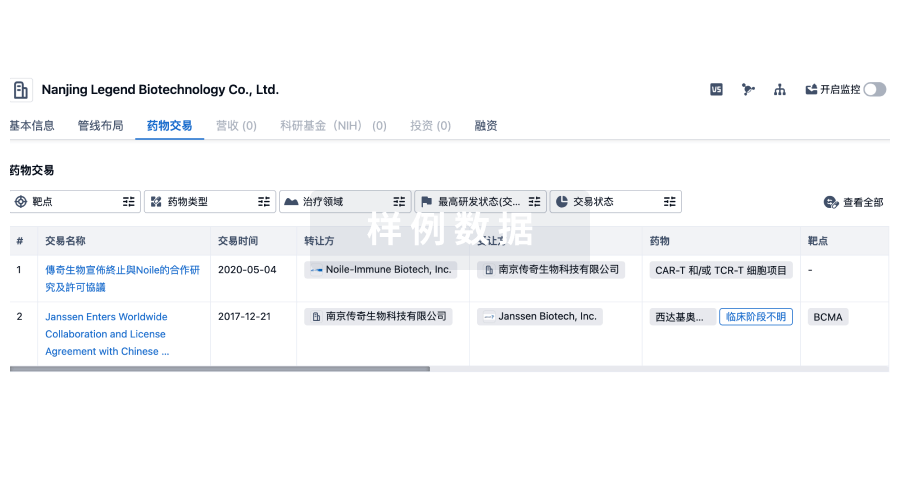
转化医学
使用我们的转化医学数据加速您的研究。
登录
或
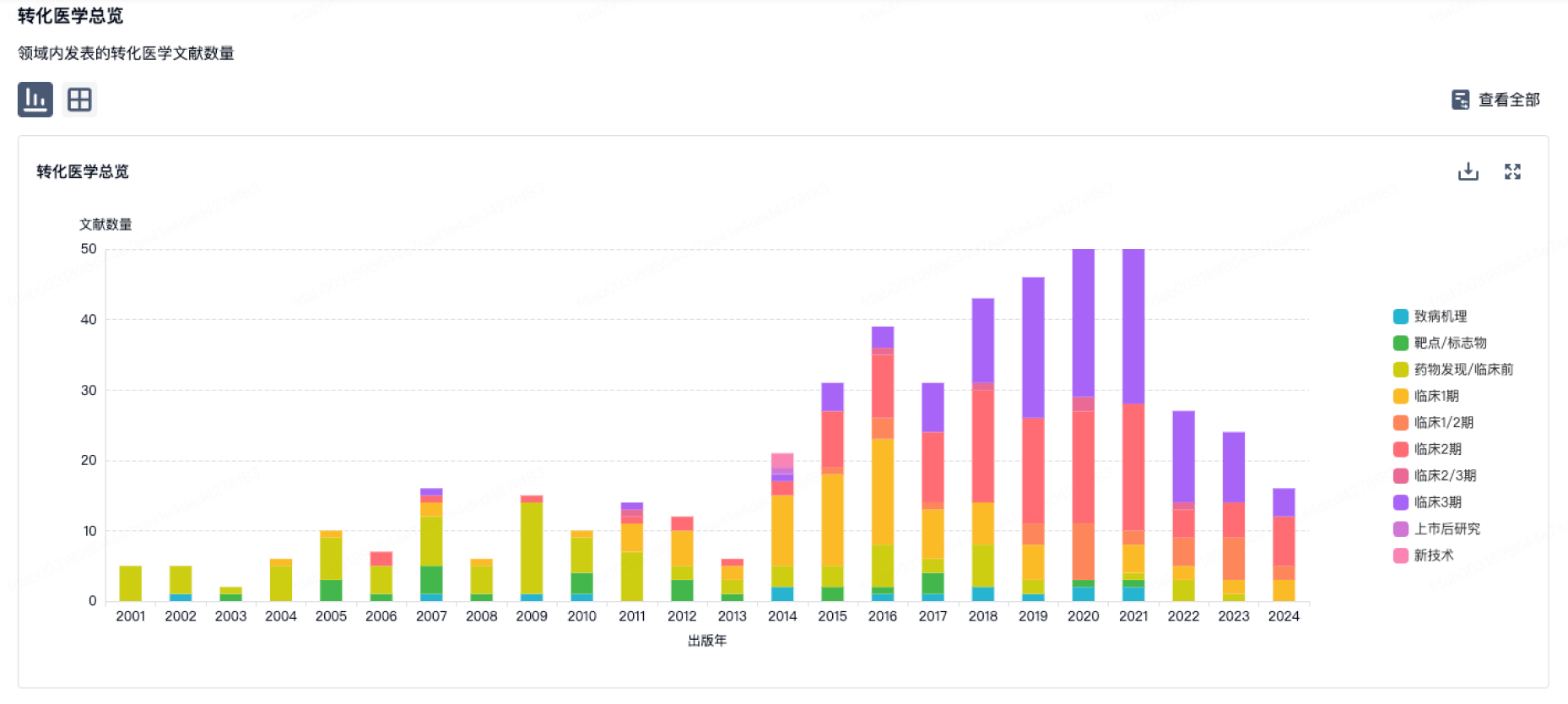
营收
使用 Synapse 探索超过 36 万个组织的财务状况。
登录
或
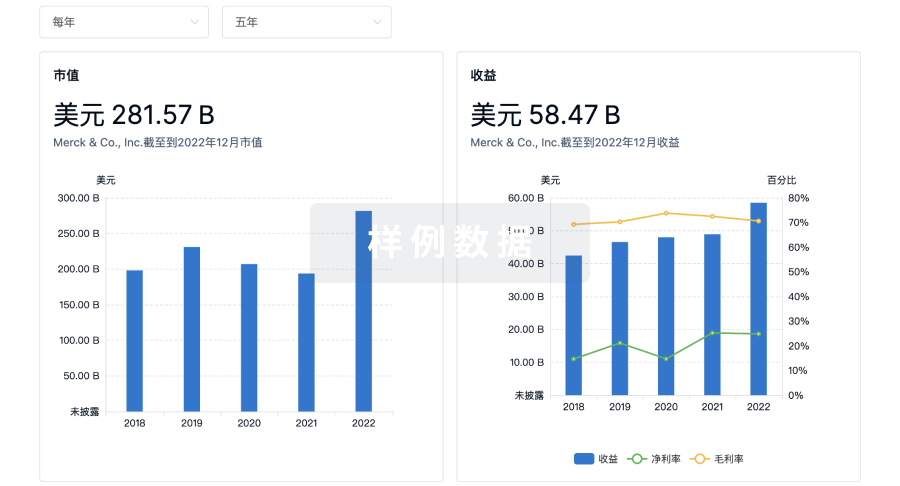
科研基金(NIH)
访问超过 200 万项资助和基金信息,以提升您的研究之旅。
登录
或
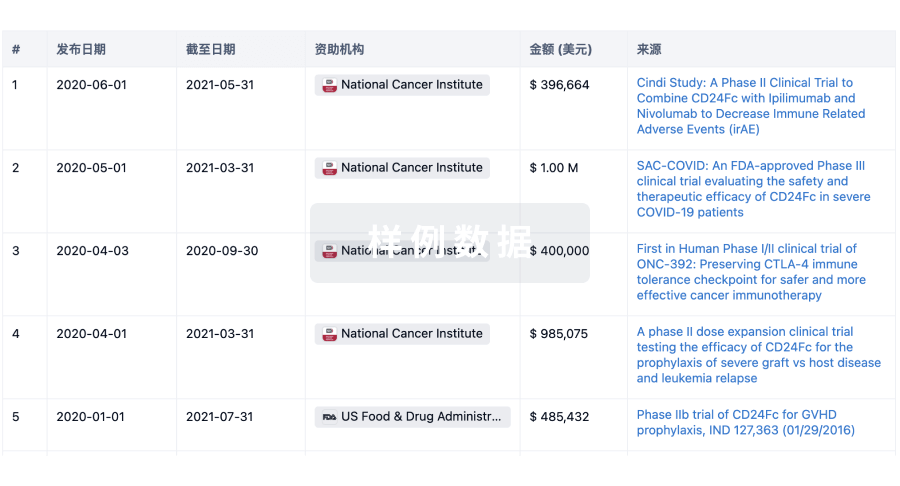
投资
深入了解从初创企业到成熟企业的最新公司投资动态。
登录
或
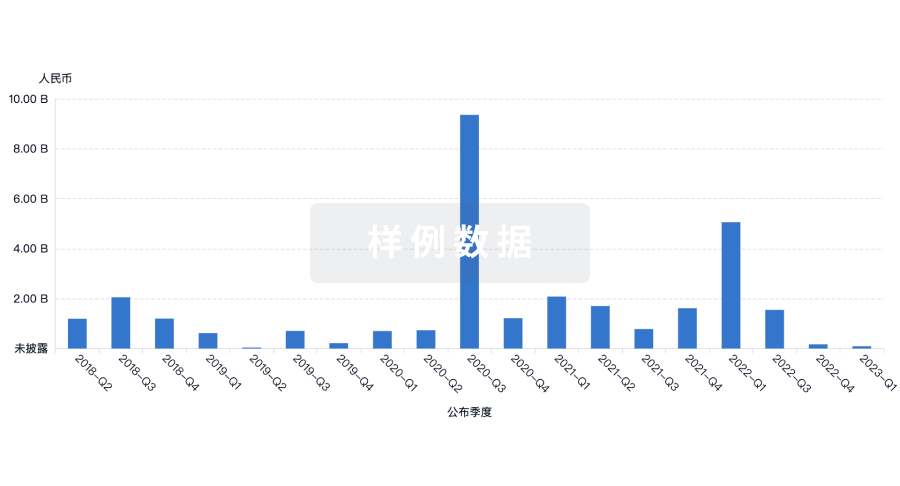
融资
发掘融资趋势以验证和推进您的投资机会。
登录
或
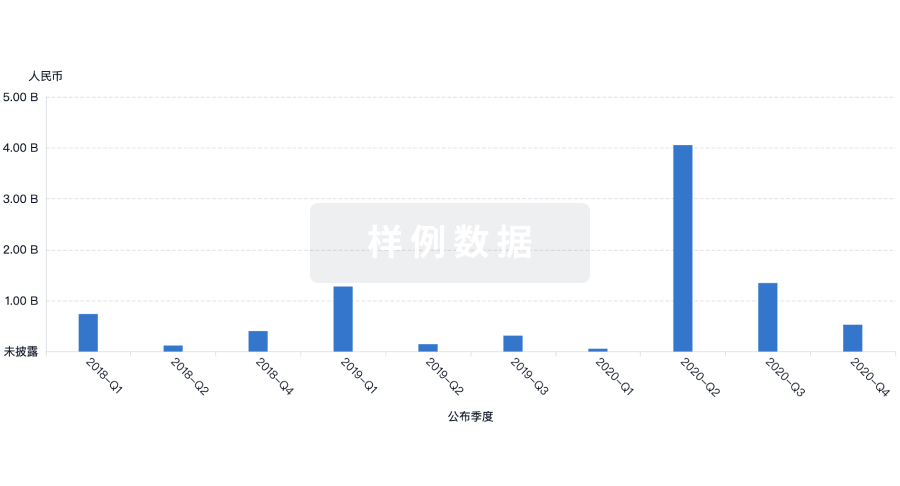
生物医药百科问答
全新生物医药AI Agent 覆盖科研全链路,让突破性发现快人一步
立即开始免费试用!
智慧芽新药情报库是智慧芽专为生命科学人士构建的基于AI的创新药情报平台,助您全方位提升您的研发与决策效率。
立即开始数据试用!
智慧芽新药库数据也通过智慧芽数据服务平台,以API或者数据包形式对外开放,助您更加充分利用智慧芽新药情报信息。
生物序列数据库
生物药研发创新
免费使用
化学结构数据库
小分子化药研发创新
免费使用